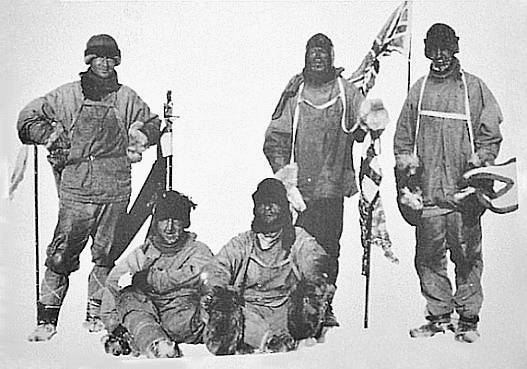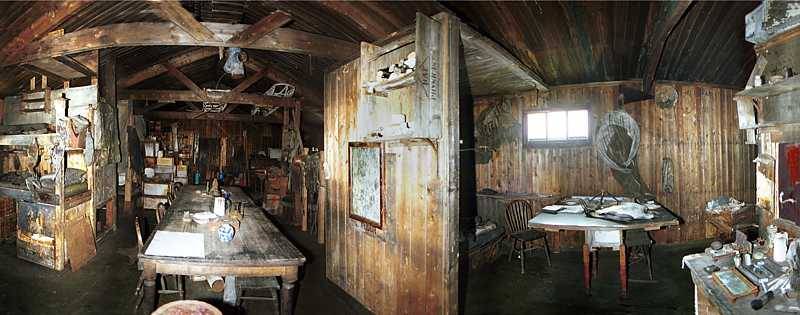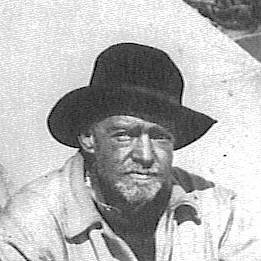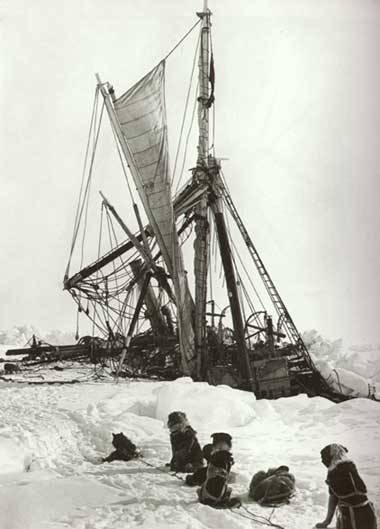The exploration of Antarctica at the beginning of the 20th century has been dubbed the “Heroic Age of Exploration.” It began in 1895 when the Sixth International Geographical Congress met in London and resolved “that the exploration of the Antarctic Regions is the greatest piece of geographical exploration still to be undertaken. That in view of the additions to knowledge in almost every branch of science which would result from such a scientific exploration the Congress recommends that the scientific societies throughout the world should urge in whatever way seems to them most effective, that this work should be undertaken before the close of the century.” The period of exploration included 17 major international expeditions to Antarctica, took the lives of 17 men, and is considered to have ended with the 1921-22 Quest expedition (also known as the Shackleton-Rowett expedition).
Nearly 100 years later, we are still uncovering traces of some of the greatest explorers of this age, namely Robert Scott and Ernest Shackleton. Scott was beaten to the Pole by the Norwegian explorer Roald Amundsen and died, along with his four colleagues, while trying to return. The last entry in Scott’s diary reads: “Had we lived, I should have had a tale to tell of hardihood, endurance and courage…which would have stirred the hearts of every Englishman.” Shackleton turned back when 100 miles from the Pole when his ship was trapped and crushed by ice, but his effort to save his starving crew in open boat journeys is considered one of the greatest acts of bravery and endurance in modern history.
But back to the new-found traces of these heroic quests: booze and butter—five crates of whiskey and brandy from the Shackleton expedition and two slabs of New Zealand butter from that of Scott, to be exact. Both discoveries were made by the New Zealand Antarctic Heritage Trust within a period of one month.
“In January 2010 New Zealand Antarctic Heritage Trust conservators excavated five crates believed to still contain whisky and brandy from under Shackleton’s expedition base in Antarctica. One frozen crate labelled ‘Mackinlay’s whisky’ has been carefully removed from Antarctica by the Trust and flown back to New Zealand. ‘As a direct result of the huge public interest in the find, we want to provide an opportunity for people to see a crate thawed and its contents revealed,’ says Antarctic Heritage Trust Director Nigel Watson. In collaboration with Canterbury Museum, New Zealand a cool room has been constructed to allow the public to see first-hand the process as conservators firstly raise the temperature in a controlled process to above freezing point and then defrost the crate to see if a dram or two of one of the world’s oldest and coolest whisky still remains. The thaw will be tracked in a blog.
Whyte & Mackay now own the Mackinlay’s brand. Master blender Richard Paterson said, ‘I will be watching the website with interest and hope the whisky has been truly preserved. It would be the highlight of my career to date to be able to analyze and replicate this liquid gold.’ Once the crate and its contents have been conserved, and following any analysis, the intention is to return it to Antarctica. A television documentary on the find has been commissioned and is expected to screen in 2011 on National Geographic Channel” (New Zealand Antarctic Heritage Trust media release).
As for the world’s oldest blocks of butter, they were found in a sack in a former pony stable nearly a century after Scott’s ill-fated mission to the South Pole: “Restoration workers also discovered shelves of tinned food, bedding and clothing in the Britons’ Cape Evans hut. The butter, however, is the only example of fresh foods used by the explorers. But what has excited the New Zealand discoverers the most is the fact that the spread is a product of their own country, still famous for its dairy products today. Asked what the reaction was when they came across the cloth bag containing two blocks of butter, Lizzie Meek of the Antarctic Heritage Trust responded: ‘Oh, just tremendous! It looked like an old wrinkly bag and you look inside and saw the wonderful Silver Fern logo.’ The same logo is used on the New Zealand All Blacks’ rugby team shirt. ‘I think its discovery is absolutely a treasure find,’ added Miss Meek. ‘What’s amazing is how strong it smells. Nearly 100 years old – very, very strong. Possibly a bit too strong? I’m not sure I’d want it on my toast.’
The experts plan to keep the butter in the chilly hut because they are determined not to let this piece of history literally melt away. And because temperatures hardly ever rise above minus 10C in the Antarctic stables, it is a good way to preserve it. Writing on the sack reads CCCDC, which is believed to stand for the New Zealand firm Canterbury Central Co-operative Dairy Company. It is thought to have formed in the 1800s and was based in Christchurch, NZ. ‘Hopefully, it will remain preserved for another 100 years if we leave it in the stables,’ said Miss Meek” (source).
Article by Bill Norrington







